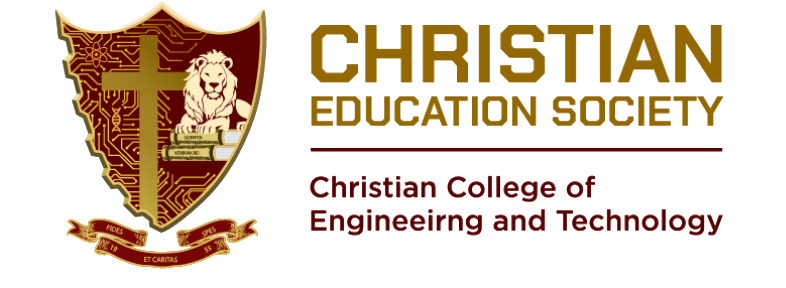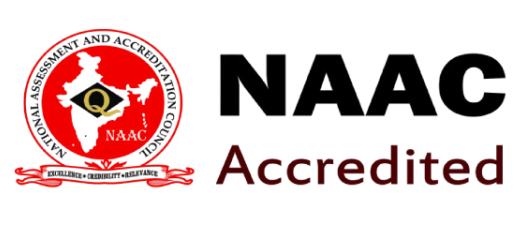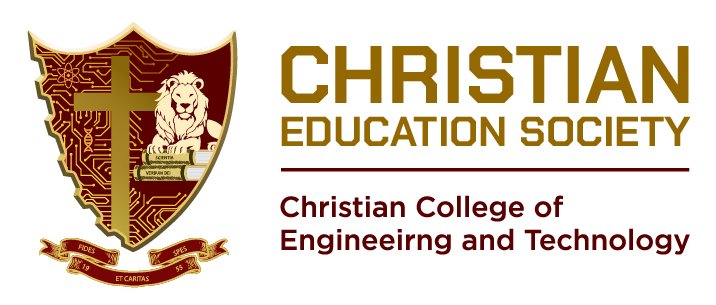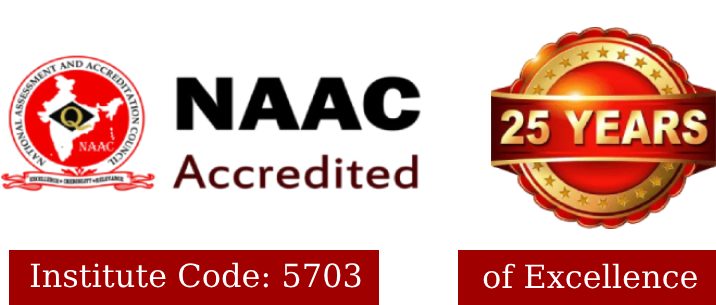B.E. Electrical & Electronics Engineering
Introduction
The department of Electrical and Electronics Engineering at Christian College of Engineering and Technology was established in the year 2005 by offering undergraduate program in B.E. Electrical & Electronics Engineering and in the year 2013, the post graduate program M.E. Power Electronics and Drives was established. Electrical and Electronics Engineering is a continuously evolving subject. As technology has advanced, so have the challenges facing the modern engineer. Electrical and Electronics Engineering involves application of the basic principles of electricity and electronics to develop machineries, semiconductor devices and control systems, has significantly paved way towards a sustainable lifestyle. The department has a dedicated team of well qualified faculty, maintaining the prescribed norms of the University. The faculty has sound knowledge in emerging areas like embedded systems, power electronics applications in power systems. The breadth and depth of the research interests of the academic staff ensures a high standard of lecture courses and provides excellent opportunities for challenging and stimulating final year projects.
Vision
To provide holistic education with the state of the art technology, to bring out students of excellent technical caliber, who would engage in research, design and development to acquire self-confidence towards nation building in its pursuit for its technological advancements to meet societal needs.
https://www.high-endrolex.com/49
Mission
- Create a conducive and a sustainable environment of learning to equip students acquire knowledge and learn to apply it professionally.
- Train students to pursue higher education to contribute towards teaching profession, research and development.
- Improve the knowledge and skill set of the students for catering to the needs of the industry and motivate them to become entrepreneurs.
- Equip students to become experts in practical problem solving with abstract thinking skills.
- Develop innovative, competent, ethical and quality engineers to contribute for technical advancements.
- Provide state-of-the-art facilities for continual improvement in teaching-learning process and research activities.
Programme Outcome (PO’s)
After going through the four years of study, our Electrical and Electronics Engineering Graduates will exhibit ability to:
PO# | Graduate Attribute | Programme Outcome |
1 | Engineering knowledge | Apply knowledge of mathematics, basic science and engineering science. |
2 | Problem analysis | Identify, formulate and solve engineering problems. |
3 | Design/development of solutions | Design an electrical system or process to improve its performance, satisfying its constraints. |
4 | Conduct investigations of complex problems | Conduct experiments in electrical and electronics systems and interpret the data. |
5 | Modern tool usage | Apply various tools and techniques to improve the efficiency of the system. |
6 | The Engineer and society | Conduct themselves to uphold the professional and social obligations. |
7 | Environment and sustainability | Design the system with environment consciousness and sustainable development. |
8 | Ethics | Interacting industry, business and society in a professional and ethical manner. |
9 | Individual and team work | Function in a multidisciplinary team. |
10 | Communication | Proficiency in oral and written Communication. |
11 | Project management and finance | Implement cost effective and improved system. |
12 | Life-long learning | Continue professional development and learning as a life-long activity. |
Program Specific Outcomes (PSO’s)
On completion of Electrical and Electronics Engineering program, the student will have the following Program Specific Outcomes.
1. Foundation of Electrical Engineering: Ability to understand the principles and working of electrical components, circuits, systems and control that are forming a part of power generation, transmission, distribution, utilization, conservation and energy saving. Students can assess the power management, auditing, crisis and energy saving aspects.
2. Foundation of Mathematical Concepts: Ability to apply mathematical
methodologies to solve problems related with electrical engineering using appropriate engineering tools and algorithms.
3. Computing and Research Ability: Ability to use knowledge in various domains to identify research gaps and hence to provide solution which leads to new ideas and innovations.
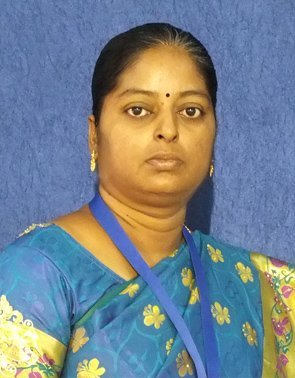
Dr. P. Booma Devi B.E, M.E., Ph.D, MISTE, AMIE
Welcome to the Department of EEE,
A lot of lessons learnt, innumerable tests undertaken and the engineer under making is ready to face the outer world. I wish that the academia gained this four year may equip and instill them good knowledge to adapt you as fresh engineers to take up any assignments ahead. This field of engineering and technology has major contribution to the society which we are enjoying and witnessing today.
The goal of the department’s work is to address significant issues that affect industry, society and academics. We continue to be leaders in our field, which motivates us to build a dynamic, productive, and professional graduate community that fosters lifelong learning.
The department faculty work with outstanding team spirit in diverse technical teams like Power System, Power Electronics, Modern Electric Drives, Control System, Renewable Energy, Image processing etc. which lead to key research publications in these areas.
The department organizes workshops, technical events, lectures, industry visits, and regular training in cutting-edge software & hardware in order to inspire the students.
This importance makes Electrical and Electronics Engineering branch to stay ever green on top of all other Engineering branches as well.
My sincere thanks to the management, Managing Director, Principal, all my faculty members and all my students for supporting me at every point to keep the department in high esteem.
My best wishes go out to all aspiring electrical engineers.
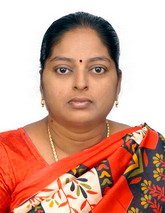
B.E., M.E., Ph.D., MISTE, AMIE
HOD
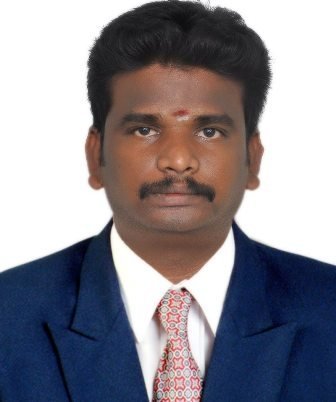
B.E., M.E., Ph.D.
Assistant Professor

Mr. R. Sam Stanley
B.E., M.E., (Ph.D.)
Assistant Professor
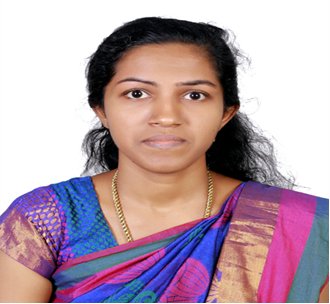
Mrs.J.R.JENISH
M.E
Assistant Professor
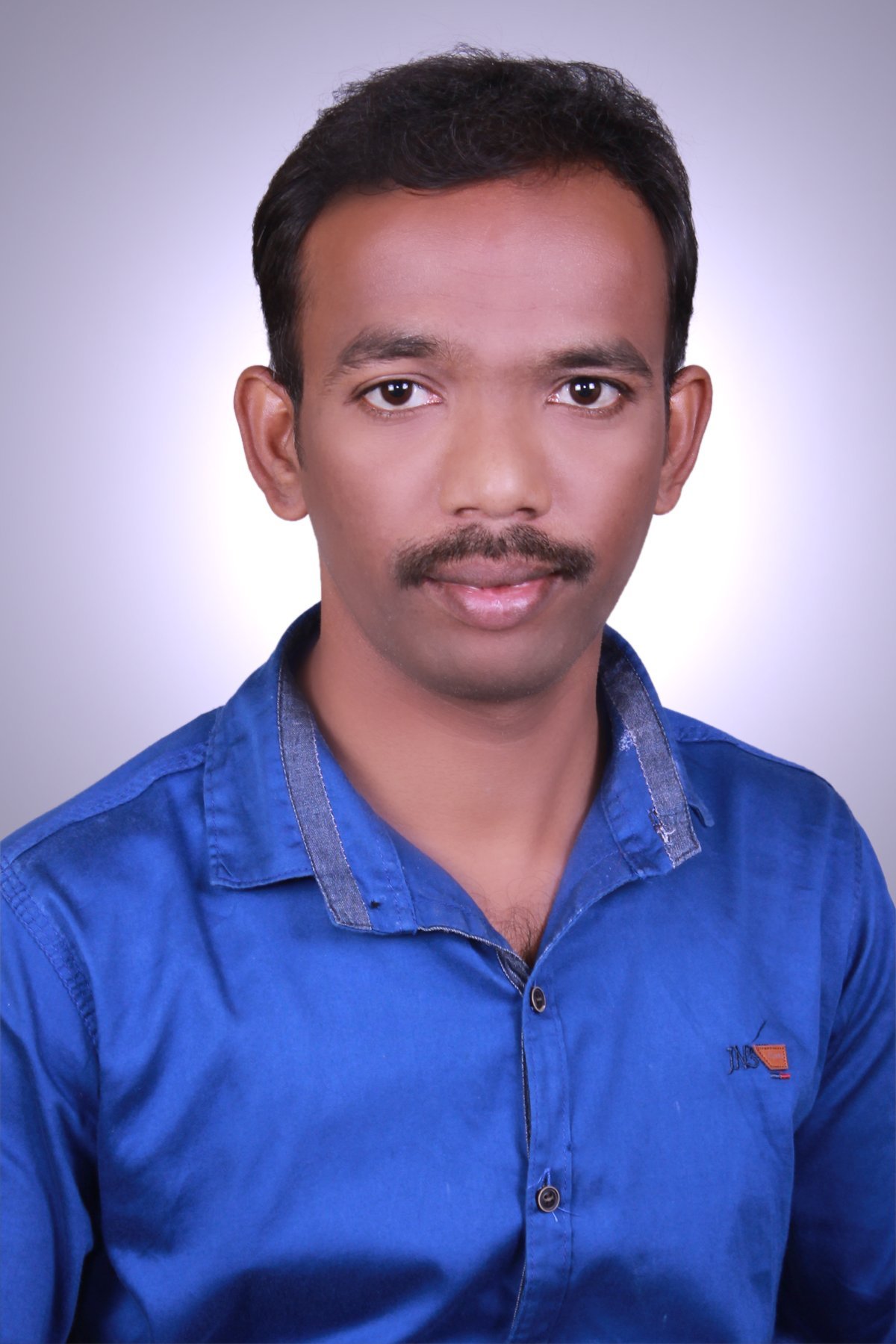
B.E., M.E.
Assistant Professor
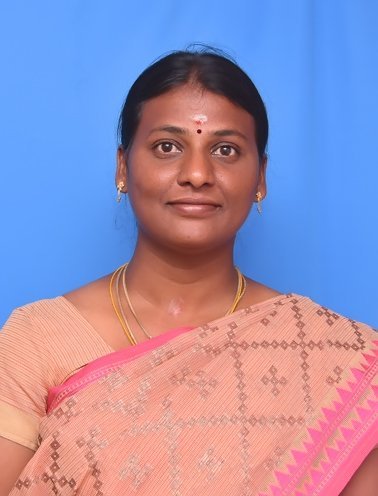
Mrs. R. Agenya
B.E., M.E., (Ph.D.)
Assistant Professor

Mrs. S. Vijaya Samundeeswari
B.E.,M.E.,(Ph.D.)
Assistant Professor

B.E., M.Tech.
Assistant Professor
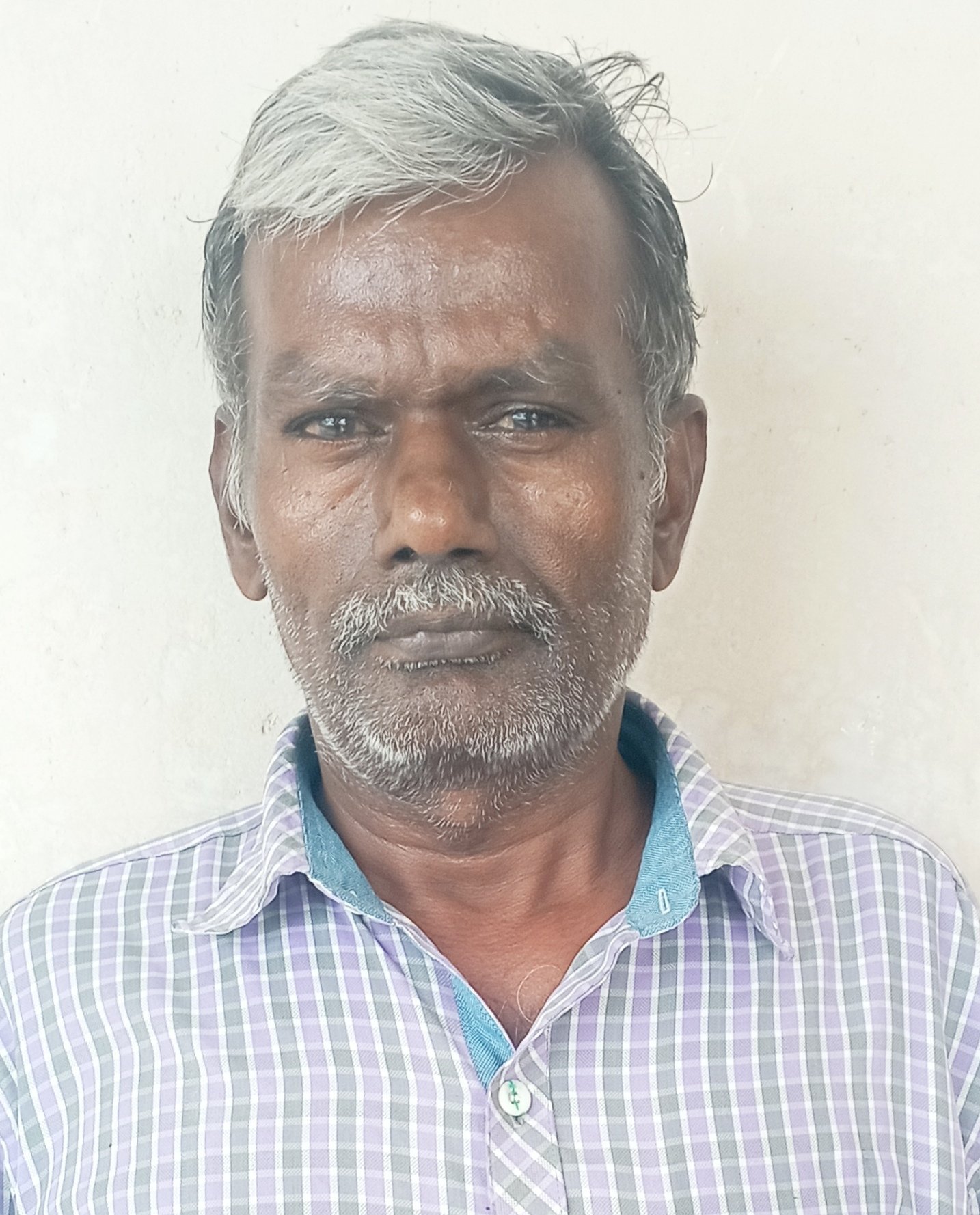
Diploma
Lab Instructor
- Department has well equipped state-of-the-art laboratory facilities, well furnished classrooms separately for B.E. (Electrical and Electronics Engineering) and M.E. (Power Electronics & Drives), Seminal Hall, Project Expo lab and a library with reading room.
- Dedicated and experienced faculty members inclusive of Three Doctorates and three faculty members are pursuing Ph.D.
- Faculty members are available with different thrust areas such as Power Electronics & Drives, Power Systems Engineering, Applied Electronics, Control and Instrumentation and they are upgrading their knowledge through NPTEL, Coursera etc.
- Few faculty members are also acting as reviewers and editorial board members in reputed International Journals. Among our faculty team, two faculty members have published a book for Regulation 2021 syllabus and received BEST PAPER AWARDs in International Conferences and one has published 2 patents.
- Department has signed MoUs with Raison Automation Pvt. Ltd, Prolific Systems and Technologies Pvt.Ltd, Sarayu Engineering, Alphha Systems, Spotlight Technology, Jothi Electrical Industries, Madurai, Windcare, Sai Engineering Works, EMDR Engineering Works, MEPA Maintenance and Contracting Services etc. which paves a way for placement and internship for students.
- Department organized several Guest lectures, seminars / webinars delivered by eminent personalities, symposia, National / International Conferences, State Level Exhibition & Competition, Add-on courses etc.
- Department is conducting skill development programmes through Naan Mudhalvan scheme every semester and the entire student community is benefitted.
- Department received a grant of Rs.25,000/- from Anna University for conducting FDP on “EE8005 – Special Electrical Machines” during December 2021.
- Our students have participated in various events inside and outside the college both in co-curricular and extracurricular activities and few have received medals and prizes.
- Industrial visits are also arranged for our students to various places like substations, windcare etc.
COURSE OUTCOMES [CO]
| HS3152 -PROFESSIONAL ENGLISH I – [C101] | ||||||
| C101.1 | To use appropriate words in a professional context | |||||
| C101.2 | To gain understanding of basic grammatic structures and use them in right context. | |||||
| C101.3 | To read and infer the denotative and connotative meanings of technical texts | |||||
| C101.4 | To write definitions, descriptions, narrations and essays on various topics | |||||
| MA3151- MATRICES AND CALCULUS – [C102] | ||||||
| C102.1 | Use the matrix algebra methods for solving practical problems. | |||||
| C102.2 | Apply differential calculus tools in solving various application problems. | |||||
| C102.3 | Able to use differential calculus ideas on several variable functions. | |||||
| C102.4 | Apply different methods of integration in solving practical problems. | |||||
| C102.5 | :Apply multiple integral ideas in solving areas, volumes and other practical problems. | |||||
| PH3151 -ENGINEERING PHYSICS – [C103] | ||||||
| C103.1 | Understand the importance of mechanics. | |||||
| C103.2 | Express their knowledge in electromagnetic waves. | |||||
| C103.3 | Demonstrate a strong foundational knowledge in oscillations, optics and lasers. | |||||
| C103.4 | Understand the importance of quantum physics. | |||||
| C103.5 | Comprehend and apply quantum mechanical principles towards the formation of energy bands. | |||||
| CY3151 – ENGINEERING CHEMISTRY – [C104] | ||||||
| C104.1 | To infer the quality of water from quality parameter data and propose suitable treatment methodologies to treat water. | |||||
| C104.2 | To identify and apply basic concepts of nanoscience and nanotechnology in designing the synthesis of nanomaterials for engineering and technology applications. | |||||
| C104.3 | To apply the knowledge of phase rule and composites for material selection requirements. | |||||
| C104.4 | To recommend suitable fuels for engineering processes and applications. | |||||
| C104.5 | To recognize different forms of energy resources and apply them for suitable applications in energy sectors. | |||||
| GE3151- PROBLEM SOLVING AND PYTHON PROGRAMMING – [C105] | ||||||
| C105.1 | Develop algorithmic solutions to simple computational problems. | |||||
| C105.2 | Develop and execute simple Python programs. | |||||
| C105.3 | Write simple Python programs using conditionals and loops for solving problems. | |||||
| C105.4 | Decompose a Python program into functions. | |||||
| C105.5 | Represent compound data using Python lists, tuples, dictionaries etc. | |||||
| C105.6 | Read and write data from/to files in Python programs. | |||||
| GE3152 – HERITAGE OF TAMILS – [C106] | ||||||
| C106.1 | ||||||
| C106.2 | ||||||
| C106.3 | ||||||
| C106.4 | ||||||
| C106.5 | ||||||
| GE3171 – PROBLEM SOLVING AND PYTHON PROGRAMMING LABORATORY – [C107] | ||||||
| C107.1 | Develop algorithmic solutions to simple computational problems | |||||
| C107.2 | Develop and execute simple Python programs. | |||||
| C107.3 | Implement programs in Python using conditionals and loops for solving problems.. | |||||
| C107.4 | Deploy functions to decompose a Python program. | |||||
| C107.5 | Process compound data using Python data structures. | |||||
| C107.6 | Utilize Python packages in developing software applications. | |||||
| BS3171 – PHYSICS AND CHEMISTRY LABORATORY – [C108a] | ||||||
| C108.a.1 | Understand the functioning of various physics laboratory equipment. | |||||
| C108.a.2 | Use graphical models to analyze laboratory data. | |||||
| C108.a.3 | Use mathematical models as a medium for quantitative reasoning and describing physical reality. | |||||
| C108.a.4 | Access, process and analyze scientific information. | |||||
| C108.a.5 | Solve problems individually and collaboratively. | |||||
| CHEMISTRY LABORATORY – [C108b] | ||||||
| C108.b.1 | To analyse the quality of water samples with respect to their acidity, alkalinity, hardness and DO. | |||||
| C108.b.2 | To determine the amount of metal ions through volumetric and spectroscopic techniques | |||||
| C108.b.3 | To analyse and determine the composition of alloys. | |||||
| C108.b.4 | To learn simple method of synthesis of nanoparticles | |||||
| C108.b.5 | To quantitatively analyse the impurities in solution by electroanalytical techniques | |||||
| GE3172 – ENGLISH LABORATORY – [C109] | ||||||
| C109.1 | To listen to and comprehend general as well as complex academic information | |||||
| C109.2 | To listen to and understand different points of view in a discussion | |||||
| C109.3 | To speak fluently and accurately in formal and informal communicative contexts | |||||
| C109.4 | To describe products and processes and explain their uses and purposes clearly and accurately | |||||
| C109.5 | To express their opinions effectively in both formal and informal discussions | |||||
| HS3252- PROFESSIONAL ENGLISH – II – [C110] | ||||||
| C110.1 | To compare and contrast products and ideas in technical texts. | |||||
| C110.2 | To identify and report cause and effects in events, industrial processes through technical texts | |||||
| C110.3 | To analyse problems in order to arrive at feasible solutions and communicate them in the written format. | |||||
| C110.4 | To present their ideas and opinions in a planned and logical manner | |||||
| C110.5 | To draft effective resumes in the context of job search. | |||||
| MA3251 -STATISTICS AND NUMERICAL METHODS – [C111] | ||||||
| C111.1 | Apply the concept of testing of hypothesis for small and large samples in real life problems. | |||||
| C111.2 | Apply the basic concepts of classifications of design of experiments in the field of agriculture. | |||||
| C111.3 | Appreciate the numerical techniques of interpolation in various intervals and apply the numerical techniques of differentiation and integration for engineering problems. | |||||
| C111.4 | Understand the knowledge of various techniques and methods for solving first and second order ordinary differential equations. | |||||
| C111.5 | Solve the partial and ordinary differential equations with initial and boundary conditions by using certain techniques with engineering applications. | |||||
| PH3202 – PHYSICS FOR ELECTRICAL ENGINEERING – [C112] | ||||||
| C112.1 | Know basics of dielectric materials and insulation. | |||||
| C112.2 | Gain knowledge on the electrical and magnetic properties of materials and their applications | |||||
| C112.3 | Understand clearly of semiconductor physics and functioning of semiconductor devices | |||||
| C112.4 | Understand the optical properties of materials and working principles of various optical devices | |||||
| C112.5 | Appreciate the importance of nanotechnology and nanodevices. | |||||
| BE3255 – BASIC CIVIL AND MECHANICAL ENGINEERING – [C113] | ||||||
| C113.1 | Understanding profession of Civil and Mechanical engineering. | |||||
| C113.2 | Summarise the planning of building, infrastructure and working of Machineries. | |||||
| C113.3 | Apply the knowledge gained in respective discipline | |||||
| C113.4 | Illustrate the ideas of Civil and Mechanical Engineering applications. | |||||
| C113.5 | Appraise the material, Structures, machines and energy. | |||||
| GE3251 – ENGINEERING GRAPHICS – [C114] | ||||||
| C114.1 | Use BIS conventions and specifications for engineering drawing. | |||||
| C114.2 | Construct the conic curves, involutes and cycloid. | |||||
| C114.3 | Solve practical problems involving projection of lines. | |||||
| C114.4 | Draw the orthographic, isometric and perspective projections of simple solids. | |||||
| C114.5 | Draw the development of simple solids. | |||||
| EE3251 –ELECTRIC CIRCUIT ANALYSIS – [C115] | ||||||
| C115.1 | Explain circuit’s behavior using circuit laws. | |||||
| C115.2 | Apply mesh analysis/ nodal analysis / network theorems to determine behavior of the given DC and AC circuit | |||||
| C115.3 | Compute the transient response of first order and second order systems to step and sinusoidal input | |||||
| C115.4 | Compute power, line/ phase voltage and currents of the given three phase circuit | |||||
| C115.5 | Explain the frequency response of series and parallel RLC circuits | |||||
| C115.6 | Explain the behavior of magnetically coupled circuits. | |||||
| GE3252 – TAMILS AND TECHNOLOGY – [C116] | ||||||
| C116.1 | ||||||
| C116.2 | ||||||
| C116.3 | ||||||
| C116.4 | ||||||
| C116.5 | ||||||
| GE3271 – ENGINEERING PRACTICES LABORATORY – [C117] | ||||||
| C117.1 | :Draw pipe line plan; lay and connect various pipe fittings used in common household plumbing work; Saw; plan; make joints in wood materials used in common household wood work. | |||||
| C117.2 | Wire various electrical joints in common household electrical wire work. | |||||
| C117.3 | Weld various joints in steel plates using arc welding work; Machine various simple processes like turning, drilling, tapping in parts; Assemble simple mechanical assembly of common household equipments; Make a tray out of metal sheet using sheet metal work. | |||||
| C117.4 | :Solder and test simple electronic circuits; Assemble and test simple electronic components on PCB. | |||||
| EE3271 – ELECTRIC CIRCUITS LABORATORY – [C118] | ||||||
| C118.1 | Use simulation and experimental methods to verify the fundamental electrical laws for the given DC/AC circuit [Ex 1] | |||||
| C118.2 | Use simulation and experimental methods to verify the various electrical theorems [Superposition, Thevenin , Norton and maximum power transfer] for the given DC/AC circuit [Ex 2-5] | |||||
| C118.3 | Analyze transient behavior of the given RL/RC/RLC circuit using simulation and experimental methods [Ex 6] | |||||
| C118.4 | Analyze frequency response of the given series and parallel RLC circuit using simulation and experimentation methods [Ex 7-8] | |||||
| C118.5 | Analyze the performance of the given three-phase circuit using simulation and experimental methods [Ex 9] | |||||
| GE3272 – COMMUNICATION LABORATORY – [C119] | ||||||
| C119.1 | To listen to and comprehend general as well as complex academic information | |||||
| C119.2 | To listen to and understand different points of view in a discussion | |||||
| C119.3 | To speak fluently and accurately in formal and informal communicative contexts | |||||
| C119.4 | To describe products and processes and explain their uses and purposes clearly and accurately | |||||
| C119.5 | To express their opinions effectively in both formal and informal discussions | |||||
| MA3303 -PROBABILITY AND COMPLEX FUNCTIONS – [C201] | ||||||
| C201.1 | Understand the fundamental knowledge of the concepts of probability and have knowledge of standard distributions which can describe real life phenomenon. | |||||
| C201.2 | Understand the basic concepts of one and two dimensional random variables and apply in engineering applications. | |||||
| C201.3 | To develop an understanding of the standard techniques of complex variable theory in particular analytic function and its mapping property. | |||||
| C201.4 | To familiarize the students with complex integration techniques and contour integration techniques which can be used in real integrals. | |||||
| C201.5 | To acquaint the students with Differential Equations which are significantly used in engineering problems. | |||||
| EE3301 -ELECTROMAGNETIC FIELDS – [C202] | ||||||
| C202.1 | Visualize and explain Gradient, Divergence, and Curl operations on electromagnetic vector fieldsand identify the electromagnetic sources and their effects. | |||||
| C202.2 | Compute and analyse electrostatic fields, electric potential, energy density along with their applications. | |||||
| C202.3 | Compute and analyse magneto static fields, magnetic flux density, vector potential along with their applications. | |||||
| C202.4 | Explain different methods of emf generation and Maxwell’s equations | |||||
| C202.5 | Explain the concept of electromagnetic waves and characterizing parameters | |||||
| EE3302- DIGITAL LOGIC CIRCUITS – [C203] | ||||||
| C203.1 | Explain various number systems and characteristics of digital logic families | |||||
| C203.2 | Apply K-maps and Quine McCluskey methods to simplify the given Boolean expressions | |||||
| C203.3 | Explain the implementation of combinational circuit such as multiplexers and de multiplexers – code converters, adders, subtractors, Encoders and Decoders | |||||
| C203.4 | Design various synchronous and asynchronous circuits using Flip Flops | |||||
| C203.5 | Explain asynchronous sequential circuits and programmable logic devices | |||||
| C203.6 | Use VHDL for simulating and testing RTL, combinatorial and sequential circuits | |||||
| EC3301 – ELECTRON DEVICES AND CIRCUITS – [C204] | ||||||
| C204.1 | Explain the structure and operation of PN junction devices [diode, Zener diode, LED and Laser diode] | |||||
| C204.2 | Design clipper, clamper, half wave and full wave rectifier, regulator circuits using PN junction diodes | |||||
| C204.3 | Analyze the structure and characteristics BJT, FET, MOSFET, UJT, Thyristor and IGBT | |||||
| C204.4 | Analyze the performance of various configurations of BJT and MOSFET based amplifier | |||||
| C204.5 | Explain the characteristics of MOS based cascade and differential amplifier | |||||
| C204.6 | Explain the operation of various feedback amplifiers and oscillators | |||||
| EE3303 – ELECTRICAL MACHINES – I – [C205] | ||||||
| C205.1 | Apply the laws governing the electromechanical energy conversion for singly and multiple excited systems. | |||||
| C205.2 | Explain the construction and working principle of DC machines. | |||||
| C205.3 | Interpret various characteristics of DC machines. | |||||
| C205.4 | Compute various performance parameters of the machine, by conducting suitable tests. | |||||
| C205.5 | Draw the equivalent circuit of transformer and predetermine the efficiency and regulation. | |||||
| C205.6 | Describe the working principle of auto transformer, three phase transformer with different types of connections. | |||||
| CS3353 – C PROGRAMMING AND DATA STRUCTURES – [C206] | ||||||
| C206.1 | Develop C programs for any real world/technical application. | |||||
| C206.2 | Apply advanced features of C in solving problems. | |||||
| C206.3 | Write functions to implement linear and non–linear data structure operations. | |||||
| C206.4 | Suggest and use appropriate linear/non–linear data structure operations for solving a given problem. | |||||
| C206.5 | Appropriately use sort and search algorithms for a given application. | |||||
| C206.6 | Apply appropriate hash functions that result in a collision free scenario for data storage and retrieval. | |||||
| EC3311 – ELECTRONIC DEVICES AND CIRCUITS LABORATORY – [C207] | ||||||
| C207.1 | Analyze the characteristics of PN, Zener diode and BJT in CE,CC,CB configurations experimentally | |||||
| C207.2 | Analyze the characteristics of JFET and UJT experimentally | |||||
| C207.3 | Analyze frequency response characteristics of a Common Emitter amplifier experimentally | |||||
| C207.4 | Analyze the characteristics of RC phase shift and LC oscillators experimentally | |||||
| C207.5 | Analyze the characteristics of half-wave and full-wave rectifier with and without filters experimentally | |||||
| C207.6 | Analyze the characteristics of FET based differential amplifier experimentally | |||||
| C207.7 | Calculate the frequency and phase angle using CRO experimentally | |||||
| C207.8 | Analyze the frequency response characteristics of passive filters experimentally | |||||
| EE3311 – ELECTRICAL MACHINES LABORATORY – I – [C208] | ||||||
| C208.1 | Construct the circuit with appropriate connections for the given DC machine/transformer. | |||||
| C208.2 | Experimentally determine the characteristics of different types of DC machines. | |||||
| C208.3 | Demonstrate the speed control techniques for a DC motor for industrial applications. | |||||
| C208.4 | Identify suitable methods for testing of transformer and DC machines. | |||||
| C208.5 | Predetermine the performance parameters of transformers and DC motor. | |||||
| C208.6 | Understand DC motor starters and 3-phase transformer connections. | |||||
| CS3362 -C PROGRAMMING AND DATA STRUCTURES LABORATORY – [C209] | ||||||
| C209.1 | Use different constructs of C and develop applications | |||||
| C209.2 | Write functions to implement linear and non-linear data structure operations | |||||
| C209.3 | Suggest and use the appropriate linear / non-linear data structure operations for a given problem | |||||
| C209.4 | Suggest and use the appropriate linear / non-linear data structure operations for a given problem | |||||
| C209.5 | Suggest and use the appropriate linear / non-linear data structure operations for a given problem | |||||
| GE3361 -PROFESSIONAL DEVELOPMENT – [C210] | ||||||
| C210.1 | Use MS Word to create quality documents, by structuring and organizing content for their day to day technical and academic requirements | |||||
| C210.2 | Use MS EXCEL to perform data operations and analytics, record, retrieve data as per requirements and visualize data for ease of understanding | |||||
| C210.3 | Use MS PowerPoint to create high quality academic presentations by including common tables, charts, graphs, interlinking other elements, and using media objects. | |||||
| GE3451 – ENVIRONMENTAL SCIENCES AND SUSTAINABILITY – [C211] | ||||||
| C211.1 | To recognize and understand the functions of environment, ecosystems and biodiversity and their conservation. | |||||
| C211.2 | To identify the causes, effects of environmental pollution and natural disasters and contribute to the preventive measures in the society. | |||||
| C211.3 | To identify and apply the understanding of renewable and non-renewable resources and contribute to the sustainable measures to preserve them for future generations. | |||||
| C211.4 | To recognize the different goals of sustainable development and apply them for suitable technological advancement and societal development. | |||||
| C211.5 | To demonstrate the knowledge of sustainability practices and identify green materials, energy cycles and the role of sustainable urbanization. | |||||
| EE3401 – TRANSMISSION AND DISTRIBUTION – [C212] | ||||||
| C212.1 | Understand the structure of power system, computation of transmission line parameters for different configurations. | |||||
| C212.2 | Model the transmission lines to determine the line performance and to understand the impact of Ferranti effect and corona on line performance | |||||
| C212.3 | Do Mechanical design of transmission lines, grounding and to understand about the insulators in transmission system. | |||||
| C212.4 | Model the transmission lines to determine the line performance and to understand the impact of Ferranti effect and corona on line performance | |||||
| C212.5 | Model the transmission lines to determine the line performance and to understand the impact of Ferranti effect and corona on line performance | |||||
| EE3402 – LINEAR INTEGRATED CIRCUITS – [C213] | ||||||
| C213.1 | Explain monolithic IC fabrication process | |||||
| C213.2 | Explain the fabrication of diodes, capacitance, resistance, FETs and PV Cell. | |||||
| C213.3 | Analyze the characteristics and basic applications [inverting/non-inverting amplifier, summer, differentiator, integrator, V/I and I/V converter] of Op-Amp | |||||
| C213.4 | Explain circuit and applications of op-amp based instrumentation amplifier, log/antilog amplifier, analog multiplier /divider, active filters, comparators, waveform generators, A/D and D/A converters | |||||
| C213.5 | Explain Functional blocks, characteristics and applications of Timer, PLL, analog multiplier ICs. | |||||
| C213.6 | Explain the applications of ICs in Instrumentation amplifier, fixed and variable voltage regulator, SMPS and function generator | |||||
| EE3403 – MEASUREMENTS AND INSTRUMENTATION – [C214] | ||||||
| C214.1 | Ability to understand the fundamental art of measurement in engineering. | |||||
| C214.2 | Ability to understand the structural elements of various instruments. | |||||
| C214.3 | Ability to understand the importance of bridge circuits. | |||||
| C214.4 | Ability to understand about various transducers and their characteristics by experiments. | |||||
| C214.5 | Ability to understand the concept of digital instrumentation and virtual instrumentation by experiments. | |||||
| EE3404 – MICROPROCESSOR AND MICROCONTROLLER – [C215] | ||||||
| C215.1 | Ability to write assembly language program for microprocessor and microcontroller | |||||
| C215.2 | Ability to design and implement interfacing of peripheral with microprocessor and microcontroller | |||||
| C215.3 | Ability to design and implement interfacing of peripheral with microprocessor and Ability to analyze, comprehend, design and simulate microprocessor based systems used for control and monitoring. microcontroller | |||||
| C215.4 | Ability to analyze, comprehend, design and simulate microcontroller based systems used for control and monitoring. | |||||
| C215.5 | Ability to understand and appreciate advanced architecture evolving microprocessor field | |||||
| EE3405 -ELECTRICAL MACHINES – II – [C216] | ||||||
| C216.1 | Ability to understand the construction and working principle of Synchronous generator | |||||
| C216.2 | Ability to understand the construction and working principle of Synchronous Motor | |||||
| C216.3 | Ability to understand the construction and working principle of Three Phase Induction Motor | |||||
| C216.4 | Acquire knowledge about the starting and speed control of induction motors. | |||||
| C216.5 | To gain knowledge about the basic principles and working of Single phase induction motors and Special Electrical Machines. | |||||
| EE3411 -ELECTRICAL MACHINES – LABORATORY – II – [C217] | ||||||
| C217.1 | Ability to understand and analyze EMF and MMF methods | |||||
| C217.2 | Ability to analyze the characteristics of V and Inverted V curves | |||||
| C217.3 | Acquire hands on experience of conducting various tests on alternators and obtaining their performance indices using standard analytical as well as graphical methods. to understand the importance of Synchronous machines | |||||
| C217.4 | Acquire hands on experience of conducting various tests on induction motors and obtaining their performance indices using standard analytical as well as graphical methods. to understand the importance of single and three phase Induction motors | |||||
| C217.5 | Ability to acquire knowledge on separation of losses | |||||
| EE3412 -LINEAR AND DIGITAL CIRCUITS LABORATORY – [C218] | ||||||
| C218.1 | Ability to understand and implement Boolean Functions. | |||||
| C218.2 | Ability to understand the importance of code conversion | |||||
| C218.3 | Ability to Design and implement circuits with digital ICs like decoders, multiplexers, register. | |||||
| C218.4 | Ability to acquire knowledge on Application of Op-Amp | |||||
| C218.5 | Ability to Design and implement counters using analog ICs like timers, VCOs and digital ICs like Flip-flops and counters. | |||||
| EE3413 -MICROPROCESSOR AND MICROCONTROLLER LABORATORY – [C219] | ||||||
| C219.1 | Ability to write assembly language program for microprocessor. | |||||
| C219.2 | Ability to write assembly language program for microcontroller | |||||
| C219.3 | Ability to design and implement interfacing of peripheral with microprocessor and microcontroller | |||||
| C219.4 | Ability to analyze, comprehend, design and simulate microprocessor based systems used for control and monitoring | |||||
| C219.5 | Ability to analyze, comprehend, design and simulate microcontroller based systems used for control and monitoring. | |||||
| EE3501 – POWER SYSTEM ANALYSIS – [C301] | ||||||
| C301.1 | Ability to model the power system under steady state operating condition. | |||||
| C301.2 | Ability to carry out power flow analysis using | |||||
| C301.3 | Ability to infer the significance of short circuit studies in designing circuit breakers | |||||
| C301.4 | Ability to analyze the state of the power system for various unsymmetrical faults | |||||
| C301.5 | Ability to analyze the stability of power system using different methods | |||||
| EE3591 – POWER ELECTRONICS – [C302] | ||||||
| C302.1 | Understand the operation of semiconductor devices and dynamic characteristics and to design &analyze the low power SMPS | |||||
| C302.2 | : Analyze the various uncontrolled rectifiers and design suitable filter circuits | |||||
| C302.3 | Analyze the operation of the n-pulse converters and evaluate the performance parameters | |||||
| C302.4 | Understand various PWM techniques and apply voltage control and harmonic elimination methods to inverter circuits. | |||||
| C302.5 | Understand the operation of AC voltage controllers and its applications. | |||||
| EE3503 – CONTROL SYSTEM – [C303] | ||||||
| C303.1 | Represent simple systems in transfer function and state variable forms. | |||||
| C303.2 | : Analyze simple systems in time domain | |||||
| C303.3 | Analyze simple systems in frequency domain. | |||||
| C303.4 | Infer the stability of systems in time and frequency domain. | |||||
| C303.5 | Interpret characteristics of the system and find out solution for simple control problems. | |||||
| EE3009 – SPECIAL ELECTRICAL MACHINES – [C304] | ||||||
| C304.1 | Ability to model and analyze power electronic systems and equipment using computational software. | |||||
| C304.2 | Ability to optimally design magnetics required in special machines based drive systems using FEM based software tools. | |||||
| C304.3 | Ability to analyse the dynamic performance of special electrical machines | |||||
| C304.4 | Ability to understand the operation and characteristics of other special electrical machines. | |||||
| C304.5 | Ability to design and conduct experiments towards research. | |||||
| EE3017 – EMBEDDED CONTROL FOR ELECTRIC DRIVES – [C305] | ||||||
| C305.1 | Interpret the significance of embedded control of electrical drives | |||||
| C305.2 | Deliver insight into various control strategies for electrical drives. | |||||
| C305.3 | Developing knowledge of Machine learning and optimization techniques for motor control. | |||||
| C305.4 | Develop embedded system solutions for real-time application such as Electric vehicles and UAVs. | |||||
| C305.5 | Improved Employability and entrepreneurship capacity due to knowledge up gradation on recent trends in embedded system skills required for motor control strategy. | |||||
| MX3084 – DISASTER RISK REDUCTION AND MANAGEMENT – [C306] | ||||||
| C306.1 | To impart knowledge on the concepts of Disaster, Vulnerability and Disaster Risk reduction [DRR] | |||||
| C306.2 | To enhance understanding on Hazards, Vulnerability and Disaster Risk Assessment prevention and risk reduction | |||||
| C306.3 | To develop disaster response skills by adopting relevant tools and technology | |||||
| C306.4 | Enhance awareness of institutional processes for Disaster response in the country and | |||||
| C306.5 | Develop rudimentary ability to respond to their surroundings with potential Disaster response in areas where they live, with due sensitivity | |||||
| EE3511 – POWER ELECTRONICS LABORATORY – [C307] | ||||||
| C307.1 | Determine the characteristics of SCR, IGBT, TRIAC, MOSFET and IGBT | |||||
| C307.2 | Find the transfer characteristics of full converter, semi converter, step up and step down choppers by simulation experimentation. | |||||
| C307.3 | Analyze the voltage waveforms for PWM inverter using various modulation techniques. | |||||
| C307.4 | Design and experimentally verify the performance of basic DC/DC converter topologies used for SMPS | |||||
| C307.5 | Understand the performance of AC voltage controllers by simulation and experimentation | |||||
| EE3511 – POWER ELECTRONICS LABORATORY – [C308] | ||||||
| C308.1 | Determine the characteristics of SCR, IGBT, TRIAC, MOSFET and IGBT | |||||
| C308.2 | Find the transfer characteristics of full converter, semi converter, step up and step down choppers by simulation experimentation. | |||||
| C308.3 | Analyze the voltage waveforms for PWM inverter using various modulation techniques. | |||||
| C308.4 | Design and experimentally verify the performance of basic DC/DC converter topologies used for SMPS | |||||
| C308.5 | Understand the performance of AC voltage controllers by simulation and experimentation | |||||
| EE3512-CONTROL AND INSTRUMENTATION LABORATORY – [C309] | ||||||
| C309.1 | To model and analyze simple physical systems and simulate the performance in analog and digital platform | |||||
| C309.2 | To design and implement simple controllers in standard forms | |||||
| C309.3 | To design compensators based on time and frequency domain specifications | |||||
| C309.4 | To design a complete closed control loop and evaluate its performance for simple physical systems | |||||
| C309.5 | To analyze the stability of a physical system in both continuous and discrete domains. | |||||
| EE3601 – PROTECTION AND SWITCHGEAR – [C310] | ||||||
| C310.1 | Understand and select proper protective scheme and type of earthing | |||||
| C310.2 | Explain the operating principles of various relays. | |||||
| C310.3 | Suggest suitable protective scheme for the protection of various power system apparatus. | |||||
| C310.4 | Analyze the importance of static relays and numerical relays in power system protection. | |||||
| C310.5 | Summarize the merits and demerits and application areas of various circuit breakers. | |||||
| EE3602- POWER SYSTEM OPERATION AND CONTROL – [C311] | ||||||
| C311.1 | Understand the day – to – day operation of power system. | |||||
| C311.2 | Model and analyse the control actions that are implemented to meet the minute-tominute variation of system real power demand. | |||||
| C311.3 | Model and analyze the compensators for reactive power control and various devices used for voltage control. | |||||
| C311.4 | Prepare day ahead and real time economic generation scheduling. | |||||
| C311.5 | Understand the necessity of computer control of power systems. | |||||
| EE3027-ELECTRIC VEHICLE DESIGN, MECHANICS AND CONTROL – [C312] | ||||||
| C312.1 | To describe the concepts related with EV, HEV and to compare the same with internal combustion engine vehicles | |||||
| C312.2 | To find gain margin & phase margin for various types of transfer functions of boost converter | |||||
| C312.3 | To demonstrate the Control of A C Machines | |||||
| C312.4 | To explain the concepts related with batteries and parameters of battery | |||||
| C312.5 | To module the battery and to study the research and development for batteries | |||||
| EE3037-POWER SYSTEM TRANSIENTS – [C313] | ||||||
| C313.1 | Explain the principles of transients and its concepts | |||||
| C313.2 | Know the different types of switching transients and the way to draw the necessary equivalent circuit. | |||||
| C313.3 | Explain the concepts behind lighting and the way to protect the same. | |||||
| C313.4 | Compute the transient behavior in transmission line | |||||
| C313.5 | Explain the behavior of the Circuit during switching and to learn the simulation tool. | |||||
| OCS351- ARTIFICIAL INTELLIGENCE AND MACHINE LEARNING FUNDAMENTALS – [C314] | ||||||
| C314.1 | Understand the foundations of AI and the structure of Intelligent Agents | |||||
| C314.2 | Use appropriate search algorithms for any AI problem | |||||
| C314.3 | Study of learning methods | |||||
| C314.4 | Solving problem using Supervised learning | |||||
| C314.5 | Solving problem using Unsupervised learning | |||||
| MX3089-INDUSTRIAL SAFETY – [C315] | ||||||
| C315.1 | Understand the basic concept of safety | |||||
| C315.2 | Obtain knowledge of Statutory Regulations and standards. | |||||
| C315.3 | Know about the safety Activities of the Working Place | |||||
| C315.4 | Analyze on the impact of Occupational Exposures and their Remedies | |||||
| C315.5 | Obtain knowledge of Risk Assessment Techniques. | |||||
| EE6611-POWER SYSTEM LABORATORY – [C316] | ||||||
| C316.1 | Model and analyze the performance of the transmission lines | |||||
| C316.2 | Perform power flow, short circuit, and stability analysis for any power system network. | |||||
| C316.3 | Understand, design, and analyze the load frequency control mechanism. | |||||
| C316.4 | Perform optimal scheduling of generators and compute the state of the power system | |||||
| C316.5 | Understand, analyze, and apply the relays for power system protection. | |||||
| EE3701- HIGH VOLTAGE ENGINEERING – [C401] | ||||||
| C401.1 | Explain various overvoltage’s and its effects on power systems. | |||||
| C401.2 | Understand the breakdown phenomena in different medium under uniform and non- uniform fields. | |||||
| C401.3 | Explain the methods of generating and measuring High DC, AC, Impulse voltage and currents. | |||||
| C401.4 | Suggest and Conduct suitable HV testing of Electrical power apparatus as per Standards | |||||
| C401.5 | Explain the Industrial Applications of Electrostatic Fields. | |||||
| GE3791 – HUMAN VALUES AND ETHICS – [C402] | ||||||
| C402.1 | Identify the importance of democratic, secular and scientific values in harmonious functioning of social life | |||||
| C402.2 | Practice democratic and scientific values in both their personal and professional life. | |||||
| C402.3 | Find rational solutions to social problems. | |||||
| C402.4 | Behave in an ethical manner in society | |||||
| C402.5 | Practice critical thinking and the pursuit of truth. | |||||
| GE3752- TOTAL QUALITY MANAGEMENT – [C403] | ||||||
| C403.1 | Ability to apply TQM concepts in a selected enterprise. | |||||
| C403.2 | Ability to apply TQM principles in a selected enterprise. | |||||
| C403.3 | Ability to understand Six Sigma and apply Traditional tools, New tools, Benchmarking and FMEA. | |||||
| C403.4 | Ability to understand Taguchi’s Quality Loss Function, Performance Measures and apply QFD, TPM, COQ and BPR. | |||||
| C403.5 | Ability to apply QMS and EMS in any organization. | |||||
| CME365 – RENEWABLE ENERGY TECHNOLOGIES – [C404] | ||||||
| C404.1 | Discuss the Indian and global energy scenario | |||||
| C404.2 | Describe the various solar energy technologies and its applications | |||||
| C404.3 | Explain the various wind energy technologies. | |||||
| C404.4 | Explore the various bio-energy technologies | |||||
| C404.5 | Discuss the ocean and geothermal technologies. | |||||
| OMR353 – SENSORS – [C405] | ||||||
| C405.1 | Understand various sensor effects, sensor characteristics, signal types, calibration methods and obtain transfer function and empirical relation of sensors. They can also analyze the sensor response | |||||
| C405.2 | Analyze and select suitable sensor for displacement, proximity and range measurement. | |||||
| C405.3 | Analyze and select suitable sensor for force, magnetic field, speed, position and direction measurement. | |||||
| C405.4 | Analyze and Select suitable sensor for light detection, pressure and temperature measurement and also familiar with other miniaturized smart sensors. | |||||
| C405.5 | Select and design suitable signal conditioning circuit with proper compensation and linearizing element based on sensor output signal. | |||||
| EE3811-PROJECT WORK / INTERNSHIP – [C406] | ||||||
| C406.1 | Ability to identify, formulate, design, interprete,analyze and provide solutions to complex engineering and societal issues by applying knowledge gained on basics of science and Enginnering. | |||||
| C406.2 | Ability to choose, conduct and demonstrate a sound technical knowledge of their selected project topics in the field of power components, protection, high voltage, electronics, process automation, power electronics and drives instrumentation and control by exploring suitable engineering and IT tools. | |||||
| C406.3 | Ability to understand, formulate and propose new learning algorithms to solve engineering and societal problems of moderate complexity through multidisciplinary projects understanding commitment towards sustainable development. | |||||
| C406.4 | Ability to demonstrate, prepare reports, communicate and work in a team as a member/leader by adhering to ethical responsibilities. | |||||
| C406.5 | Ability to acknowledge the value of continuing education for oneself and to stay up with technology advancements. | |||||
